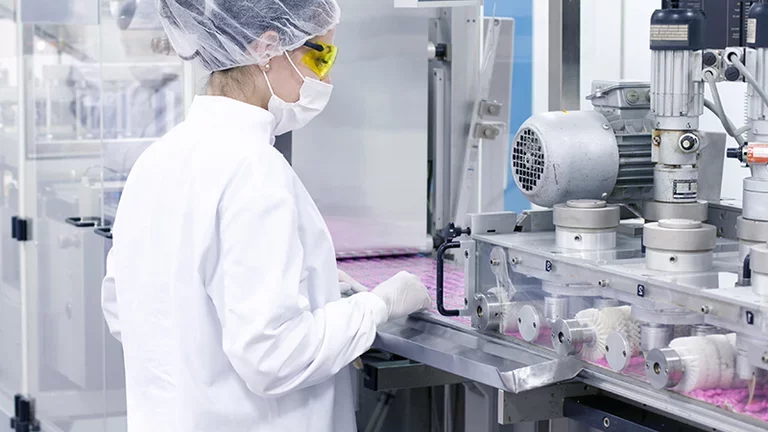
Hydrogen sulfide
- H2S
- CAS Number 7783-06-4
- UN1053 (gas)
Click & drag to move the 3D molecule
Liquid / Gas Volumes
Calculate the volume or mass of a quantity of gas or liquid
Liquid Phase
At boiling point at 1.013 bar
Gas Phase
In standard conditions (1.013 bar, 15°C)
Physical Properties
Molecule phase diagram showing the transition phases between solid, liquid and gas as a function of temperature and pressure
-
- Molar mass 34.081 g/mol
- Content in dry air /
-
Critical Point
- Temperature 100.38 °C
- Pressure 89.6291 bar
- Density 346.00 kg/m³
-
Triple Point
- Temperature -85.45 °C
- Pressure 2.32E-1 bar
Pressure 1.013 bar
| Latent heat of fusion (at melting point) | 69.731 kJ/kg |
| Melting point | - 85.7 °C |
Pressure 1.013 bar
| Boiling point | - 60.3 °C |
| Latent heat of vaporization (at boiling point) | 546.41 kJ/kg |
| Liquid density (at boiling point) | 949.2 kg/m3 |
| Compressibility factor Z | 9.8989E-1 |
| Cp/Cv ratio γ | 1.337 |
| Gas density | 1.5357 kg/m3 |
| Gas/(liquid at boiling point) equivalent | 618.09 vol/vol |
| Heat capacity Cp | 1.0116 kJ/(kg.K) |
| Heat capacity Cv | 7.5658E-1 kJ/(kg.K) |
| Specific gravity | 1.19 |
| Specific volume | 6.512E-1 m3/kg |
| Thermal conductivity | 12.65 mW/(m.K) |
| Vapor pressure | 10.3288 bar |
| Viscosity | 1.1298E-4 Po |
| Gas density (at boiling point) | 1.997 kg/m3 |
| Compressibility factor Z | 9.9148E-1 |
| Cp/Cv ratio γ | 1.3333 |
| Gas density | 1.4534 kg/m3 |
| Gas/(liquid at boiling point) equivalent | 653.09 vol/vol |
| Heat capacity Cp | 1.0126 kJ/(kg.K) |
| Heat capacity Cv | 7.5946E-1 kJ/(kg.K) |
| Solubility in water | 2.335E-3 mol/mol |
| Specific gravity | 1.19 |
| Specific volume | 6.881E-1 m3/kg |
| Thermal conductivity | 13.766 mW/(m.K) |
| Vapor pressure | 15.6544 bar |
| Viscosity | 1.195E-4 Po |
| Compressibility factor Z | 9.9236E-1 |
| Cp/Cv ratio γ | 1.331 |
| Gas density | 1.4034 kg/m3 |
| Gas/(liquid at boiling point) equivalent | 676.36 vol/vol |
| Heat capacity Cp | 1.014 kJ/(kg.K) |
| Heat capacity Cv | 7.6186E-1 kJ/(kg.K) |
| Solubility in water | 1.85E-3 mol/mol |
| Specific gravity | 1.19 |
| Specific volume | 7.126E-1 m3/kg |
| Thermal conductivity | 14.465 mW/(m.K) |
| Vapor pressure | 20.1687 bar |
| Viscosity | 1.2387E-4 Po |
Applications
Examples of uses of this molecule in Industry and Healthcare

Electronic components
Hydrogen sulfide provides sulphur source to copper indium gallium film to adjust the light absorption bandgap in chalcogenide thin film photovoltaics.

Laboratories & Research Centers
Hydrogen sulfide is used in calibration gas mixtures for petrochemical industry, environmental emission monitoring, industrial hygiene monitors and trace impurity analyzers, especially to control hydrogen quality.

Pharma & Biotech
Hydrogen sulfide is a reactant in some chemical processes.
Safety & Compatibility
GHS02
Flammable
GHS04
Gas under pressure
GHS06
Acute Toxicity
GHS09
Hazardous to the environment
Autoignition Temperature, Flammability Limits & Flash Point
Europe (according to EN1839 for Limits and EN 14522 for autoignition temperature)
| Autoignition temperature (Chemsafe) | 270 °C |
| Lower flammability limit (IEC 80079-20-1) | 3.9 vol% |
| Upper flammability limit (IEC 80079-20-1) | 50.2 vol% |
US (according to ASTM E681 for Limits and ASTM E659 for autoignition temperature)
| Autoignition temperature (NFPA 325) | 260 °C |
| Lower flammability limit (NFPA 325) | 4 vol% |
| Upper flammability limit (NFPA 325) | 44 vol% |
Threshold of toxicity
| ILV-15min EU (at Patm and 293.15 K) | 14 mg/m3 or 10 ppm |
| ILV-8h EU (at Patm and 293.15 K) | 7 mg/m3 or 5 ppm |
| VLEP 8h France (at Patm and 293.15 K) | 7 mg/m3 or 5 ppm |
| VLEP CT France (at Patm and 293.15 K) | 14 mg/m3 or 10 ppm |
Odor
Rotten egg
Metals
| Aluminium | Satisfactory |
| Brass | Not recommended |
| Monel | No data |
| Copper | No data |
| Ferritic Steel |
In humid conditions, risks of cracking and hydrogen embrittlement
Acceptable
|
| Stainless steel | Satisfactory |
| Zinc | No data |
| Titanium | No data |
Plastics
| Polytetrafluoroethylene |
Risk of permeation
Acceptable
|
| Polychlorotrifluoroethylene | Satisfactory |
| Polyvinylidene fluoride | Satisfactory |
| Polyvinyl chloride | Satisfactory |
| Ethylene tetrafluoroethylene | No data |
| Polycarbonate | No data |
| Polyamide | Satisfactory |
| Polypropylene | Satisfactory |
Elastomers
| Butyl (isobutene- isoprene) rubber |
Significant loss of mass
Acceptable
|
| Nitrile rubber |
Significant loss of mass
Not recommended
|
| Chloroprene |
Significant loss of mass
Not recommended
|
| Chlorofluorocarbons | No data |
| Silicone |
significant loss of mass
Not recommended
|
| Perfluoroelastomers |
Significant loss of mass
Not recommended
|
| Fluoroelastomers |
Significant loss of mass
Not recommended
|
| Neoprene | No data |
| Polyurethane |
Significant loss of mass
Not recommended
|
| Ethylene-Propylene | Satisfactory |
Lubricants
| Hydrocarbon based lubricant |
Contamination of the material
Not recommended
|
| Fluorocarbon based lubricant |
contamination of the material
Not recommended
|
Materials compatibility
Learn More
More information
The human body produces small amounts of hydrogen sulfide.